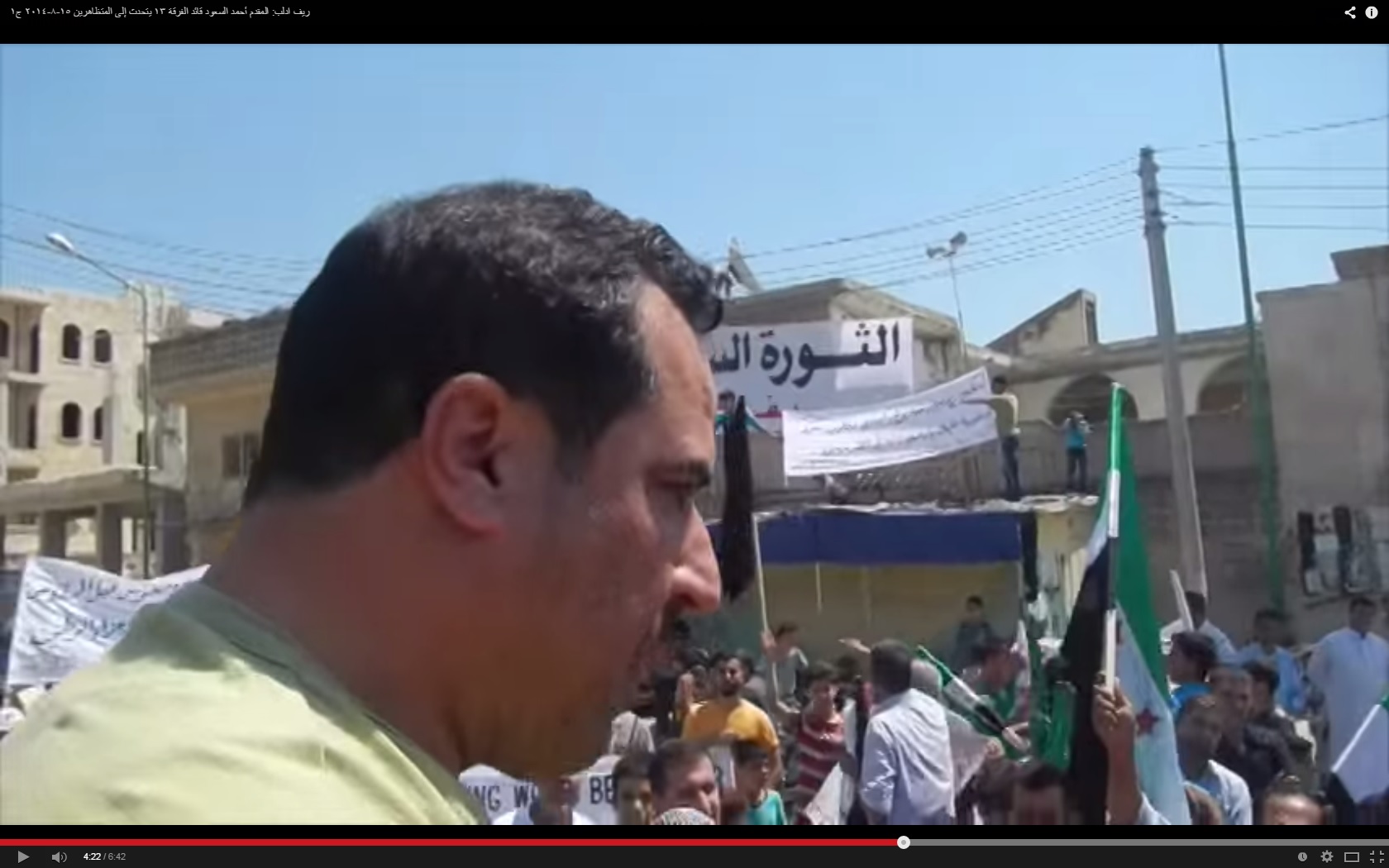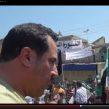
November 2014 Briefs
Publication: Militant Leadership Monitor Volume: 5 Issue: 11
By:

Leading the Fight against Islamic State: FSA Commanders Ahmad Absi Al-Su’oud and Hassan Mar’i Al-Hamadeh
Nicholas A. Heras
The al-Qaeda affiliate Jabhat al-Nusra (JN – Victory Front) recently conducted a successful campaign in the northwestern Syrian governorates of Idlib and Aleppo against the Syrian armed opposition groups Jabhat Thuwar Sooria (Syria Revolutionaries’ Front – SRF) and Harakat Hazm (Movement of the Steadfast), rebel organizations that are affiliated with the more politically moderate Free Syrian Army (FSA) and have received significant assistance from the United States and other anti-Assad nations (Al-Monitor, November 10; Daily Star [Beirut], November 3; Reuters, October 28). JN’s advances have opened up a debate over whether FSA-affiliated groups can endure without cooperating with militant Salafist groups such as JN (The Telegraph [London], November 11; Al-Monitor, November 6). Two of the most significant armed opposition commanders in the Syrian revolution, however, are based in areas of northwestern Syria near where JN conducted its recent campaign, and are in command of active and important FSA affiliates in the Idlib and Aleppo governorates. These commanders are Lieutenant Colonel Ahmad Absi al-Su’oud, leader of al-Furqa 13 (13th Division), and Lieutenant Colonel Hassan Mar’i al-Hamadeh, leader of al-Furqa 101 (101st Division). Colonel al-Su’oud, in particular, has been singled out by supporters of the Syrian armed opposition in the United States as a moderate, secular and nationalist Syrian armed opposition commander that should continue to receive support from the United States and its allies that are seeking the removal of the al-Assad government and the defeat of the Islamic State (The Hill [Washington], February 28).
Lieutenant Colonel Ahmad al-Su’oud
Colonel al-Su’oud, who is in his 40s, served for over 20 years in the Syrian military, including in a reserve mechanized division. He defected in March 2012 as a result of the Syrian military being ordered to fire on civilians in the opposition (Tahrir Souria [Idlib], May 17; al-Jazeera [Doha], March 10). [1] After first organizing rebel fighters in the Liwa Abd al-Rahman (Servant of the Merciful Brigade) militia group, he became a prominent rebel commander in the northwestern Syrian governorates of Idlib, Aleppo and Hama, and his organization is reported to be particularly powerful in and around the southern Idlib town of Ma’rat al-Numan. Ma’rat al-Numan is al-Su’oud’s hometown and lies on the strategic north-south inter-governorate M5 highway that runs between Damascus and Aleppo (al-Jazeera [Doha], March 10). [2]
In addition to his role as the leader of al-Furqa 13, al-Su’oud is one of the founding commanders of the Majlis Qiyadat al-Thawra Sooria (Syrian Revolutionary Command Council), an organization that seeks to direct disparate rebel organizations, including FSA affiliates, affiliates of al-Jabhat al-Islamiya (the Islamic Front – IF) and other armed opposition groups, in joint operations. [3] In September, al-Sa’oud and al-Furqa 13 joined al-Falaq 5 (5th Corps), a coalition of FSA-affiliated armed groups in Idlib, Hama and Aleppo governorates, in order to better coordinate their operations against Bashar al-Assad’s government (Zaman al-Wasl [Damascus], September 7). At the onset of the recent fighting between the Syrian Revolutionaries’ Front and Jabhat al-Nusra, al-Furqa 13 entered into the Quwat al-Sulh (Reconciliation Force), an emergency armed opposition coalition that brought together rebel groups from the FSA and IF into a joint operations force that sought to intercede and end the conflict between the SRF and JN (Syria News [Idlib], October 31; Siraj Press [Idlib], October 30).
Al-Su’oud asserts that his organization has approximately 2,000 well-trained fighters that have been active combatants against the Syrian military, its auxiliary forces and the Islamic State organization in several areas of Idlib, Aleppo and Hama governorates (Tahrir Souria [Idlib], May 17; al-Jazeera [Doha], March 10). [4] Under his leadership, al-Furqa 13 receives support, including training and advanced weapons such as TOW anti-tank missiles, from the United States while receiving financial support from anti-Assad nations such as Saudi Arabia and Qatar (BuzzFeed, September 24; Orient News [Dubai], May 25; Tahrir Souria [Idlib], May 17; al-Jazeera [Doha], March 10). In Syrian opposition media, al-Su’oud is portrayed as an effective local commander who has a close relationship with civilian activists in the areas where al-Furqa 13 operates, particularly in Ma’rat al-Numan. [5]
In December 2013, al-Su’oud was taken captive by fighters from the Islamic State, then known as the Islamic State of Iraq and Syria (ISIS), but was released shortly after his capture, reportedly as a result of popular protests in Ma’rat al-Numan (al-Jazeera [Doha], March 10; Daily Star [Beirut), December 30, 2013; Zaman al-Wasl [Damascus], December 28, 2013). Under his command, al-Furqa 13 has been a consistent combatant against the Islamic State, although it pragmatically cooperates with other militant Salafist organizations such as Harakat Ahrar al-Sham al-Islamiya (Islamic Movement of the Free Ones of the Levant) and Jabhat al-Nusra — an ongoing, uneasy partnership of convenience as a result of mutual interests in fighting the al-Assad government (Step Agency News [Idlib], November 14; ARA News [Sanliurfa], October 14; The Telegraph [London], September 22; al-Jazeera [Doha], March 10). Al-Su’oud is a strong advocate of open communication and coordination between armed opposition factions, regardless of their ideological orientation, in order to discourage disputes among the rebel factions and to resist attacks by the Islamic State organization and the Syrian military (al-Aan [Dubai], August 2). [6]
Lieutenant Colonel Hassan Mar’i al-Hamadeh
Colonel Hassan Mar’i al-Hamadeh, 46, defected from the Syrian Air Force on June 12, 2012, flying his MiG-21 fighter on a training mission from an air base in southwestern Syria to Jordan (al-Arabiya [Dubai], June 21, 2012; Tahrir Souria [Idlib], June 6, 2014). His defection made him an international media sensation at the time. A native of the village of Millis northwest of the city of Idlib, al-Hamadeh was granted political asylum by the Jordanian government and was hailed as the first officer from Syria’s institutionally powerful air force to defect to the revolutionary forces (Ammon News [Amman], November 1, 2012; al-Ahram [Cairo], June 24, 2012; al-Rai al-Kuwaitiya [Kuwait City], June 23, 2012; The Guardian [London], June 21, 2012). [7]
Prior to the formation of al-Furqa 101, al-Hamadeh returned to Idlib, where he was a senior officer coordinating the armed opposition’s logistics and strategy in northwestern Syria (Der Speigel [Hamburg], September 27, 2013). Al-Furqa 101 was formed in March 2014, under his leadership. It serves as the command and control center and flag unit for a coalition of FSA-affiliated rebel groups with a combined force of over 1,000 fighters operating in the northwestern exurbs of Idlib city near the Syrian-Turkish border, in the rural areas of northwestern Aleppo governorate and in northern Hama governorate (Tahrir Souria [Idlib], June 6, 2014). [8] Like several other FSA affiliates in northwestern Syria, al-Furqa 101 has been a recipient of TOW missiles from the United States and its allies (Tahrir Souria [Idlib], June 6).
Al-Furqa 101 is a core constituent armed group within al-Falaq 5 and al-Hamadeh is the ranking officer (Zaman al-Wasl [Damascus], September 7). [9] He is also one of the founding commanders of the Majlis Qiyadat al-Thawra Sooria, and has directed al-Furqa 101’s participation in the Quwat al-Sulh that attempted to mediate between Jabhat al-Nusra and the Syrian Revolutionaries’ Front (Syria News [Idlib], October 31; Siraj Press [Idlib], October 30). [10] In spite of al-Furqa 101’s participation in the Quwat al-Sulh, al-Hamadeh removed his organization’s association with one of its constituent armed groups after the leader of the group signed an agreement of cessation of hostilities with JN without his and his command staff’s approval (al-Dorar [Beirut], November 10).
Conclusion
Both of these FSA commanders are important leaders in the Syrian revolutionary forces in northwestern Syria and their importance, and that of al-Falaq 5, are likely to grow for international actors such as the United States in the aftermath of the defeat of the Syrian Revolutionaries’ Front and Harakat Hazm. Colonels al-Su’oud and al-Hamadeh have demonstrated a connection with the activist movements in their local areas of operation as well as a willingness to embrace the rhetoric that supports a post-Assad Syria that is secular and pluralistic, a stated objective of the United States and its allies. They have also demonstrated the political acumen and awareness to realize that their organizations, individually, are relatively weak and require better coordination, which has led them into a union with other FSA groups in al-Falaq 5. At the same time, both have demonstrated a willingness to cooperate with other rebel factions, even militant Salafist groups such as Harakat Ahrar al-Sham al-Islamiya and Jabhat al-Nusra, in order to survive attacks from both the Syrian military and the Islamic State organization. Assuming they and their armed organizations survive in the near-term, both al-Su’oud and al-Hamadeh are likely to be primary commanders in the FSA’s Northern Front, and are likely future leaders within the command structure in the event of a political transition in Syria and the formation of a reformed, post-Assad, Syrian national army.
Notes
1. “Exclusive Interview: FSA Commander Ahmad Al-Su’oud, Lieutenant Colonel Division 13,” Revolutionary Forces of Syria Media Office, October 21, 2014, https://rfsmediaoffice.com/en/exclusive-interview-fsa-commander-ahmad-al-suoud-lieutenant-colonel-division-13/.
2. “Al-Arabiya-Battle of Solid Construction, A Presentation by Colonel Ahmad al-Su’oud,” Ma’rakat Banyan al-Marsus YouTube page, December 30, 2012, https://www.youtube.com/watch?v=SCbtFacvsYg; “Ma’rat al-Numan-Lieutenant Colonel Ahmad al-Su’oud, Commander of Liwa Abd al-Rahman,” ENN1 YouTube page, November 15, 2012, https://www.youtube.com/watch?v=aoPYLAemnCQ.
3. “A Important Statement of the ‘And Hold Fast’ Initiative to Unify the Ranks of the Syrian Revolution,” Edlib Now YouTube page, August 3, 2014, https://www.youtube.com/watch?v=4ry9daTPHmM&feature=youtu.be.
4. “Exclusive Interview: FSA Commander Ahmad Al-Su’oud, Lieutenant Colonel Division 13,” Revolutionary Forces of Syria Media Office, October 21, 2014, https://rfsmediaoffice.com/en/exclusive-interview-fsa-commander-ahmad-al-suoud-lieutenant-colonel-division-13/.
5. “Idlib Countryside-Lieutenant Colonel Ahmad al-Su’oud Talking to Demonstrators,” Raed Fares YouTube page, August 15, 2014, https://www.youtube.com/watch?v=IwS4F24bcnE.
6. “Lieutenant Colonel Ahmad al-Su’oud, Commander of al-Furqa 13 Speaks to Al-Arabiya on the Importance of the Unity of the Factions Operating on the Ground,” Al-Furqa 13 YouTube page, August 3, 2014, https://www.youtube.com/watch?v=lQD_f3C22ao.
7. “The Pilot, Lieutenant Colonel Hassan Mar’i al-Hamadeh Landed His Plane in Jordan,” Lebanese Broadcasting Corporation, June 21, 2012, https://www.youtube.com/watch?v=jeaZh3th5rA#t=176.
8. “Statement of the Formation of the 101st Infantry Division in the Idlib Countryside,” nseemalbahr aboghaith YouTube page, March 17, 2014, https://www.youtube.com/watch?v=nPGWY-V_2uQ.
9. “Statement from Colonel Hasan Hamada, Ranking Officer of the 5th Legion,” Syrian Revolutionary Forces Media Office, September 23, 2014, https://m.facebook.com/RFSMediaOffice/photos/a.881006118583153.1073741840.880749961942102/961411497209281/?type=1.
10. Op. Cit “A Important Statement of the ‘And Hold Fast’ Initiative to Unify the Ranks of the Syrian Revolution.”




